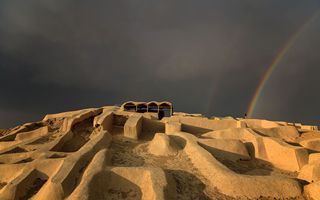(Telestock) – Over 15 million peoplecoming from all over the world, visit the Italian archaeological sitesbetween sites, monuments and museums: in all it is more than 2,500 sites. Of 911 sites protected by the‘Unesco in the whole world, 5% are Italians, a good 44: no other country, according to data, has so many.
According to research “I am culture”year 2023, of the association Symbolin Italy the expense overall supported by tourists with cultural consumption (which includes accommodation, but also other expenses in the area) has almost reached 35 billion of euros in 2022, equal to 44.9% of total tourist spending.
These numbers are enough to understand that the cultural tourism is essential for the economy of the country: in this context the Third Mission of Universitiesunderstood as the set of activities through which universities and research institutions enter into a direct relationship with the society, economy and culture of the territory in which they operate.
With the third mission, in fact, the university is able to enhance the products of teaching and researchpromoting dialogue, exchange and mutual development between the university itself and the stakeholders of the territories and social contexts of reference, to build a “knowledge society” (knowledge society).
The exhibition recently took place within this framework “Shahr-i Sokhta. When Myth Becomes History” That, from 13th to 28th July 2024at Olivetan Monastery of Lecceretraces in Italian preview the stages of the studies conducted on the UNESCO site. A multidisciplinary archaeological project that involves, in what the international scientific community considers one of the most significant sites in the entire Bronze Agethe Research Institute for Cultural Heritage and Tourism, the Ministry of Foreign Affairs and International Cooperation, the Iranian Center for Archaeological Research and the University of Salento, under the direction of Enrico Ascalone and Mansur Sajjadi.
History never ceases to teach us something, even after centuries: so here it is in one of the 31 Iranian provinces, Sistan-va-Baluchistanhistorical research has brought to light the remains of a incredibly modern and peaceful societywhose intercultural matrix and dialogue with the world has aroused lively interest in the scientific community.
In the archaeological site of Shahr-i Sokhta, in Iran, already known as the Pompeii of the Eastthe scientific collaboration started in 2016 between Henry Ascaloneprofessor of ‘Archaeology and History of Art of the Ancient Near East’ at the University of Salento, and Mansur Sajjadi of the Iranian Center for Archaeological Research, director of excavations at the site since 1997, has led to the discovery of the settlement of a civilization that during the Bronze Age lived in a peaceful and cosmopolitan way, without raising walls or building weapons, in open dialogue both internally and externally.
These conclusions were reached after a long path of study and analysis of the findsamong which one stands out Proto-Elamite tablet with accounting information dated to 3000 BC, which testifies to the complex administrative activities of the city, but also weighty materials that combine with anthropological studies on the necropolis of the center, with archaeozoological research and paleobotanical investigations that have revealed unpublished details on the daily life and social organization of Shahr-i Sokhta.
Shahr-i Sokhta was thus a center without a single elitein which several ethnic groups coexisted together, organized in an etharchic, peaceful and matrilineal way, without defensive walls and objects of offense. A alternative development model to the hierarchical and militarized one known in Mesopotamia, the Indus and Egypt, which then had to collapse with the beginning of the second millennium BC due to climatic factors that put an end to at least three of the great river civilizations (Indus, Halil and Hilmand).
A 1500 year long historywhich is reconstructed and made accessible to the public through a careful and detailed photographic journey which will be open to visitors from 13 to 28 July 2024 at the Olivetan Monastery in Lecce, with the exhibition “Shahr-i Sokhta. When myth becomes history”.
